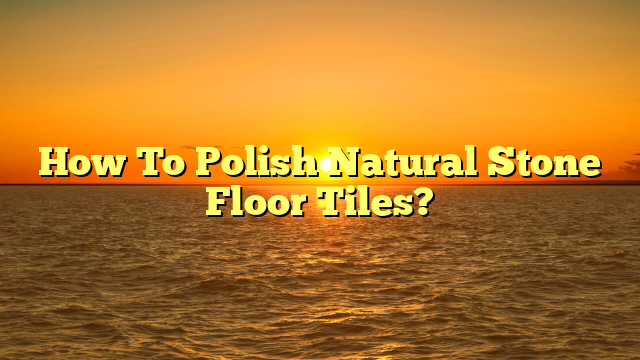“Lighten Parquet Floors Without Sanding? (Quick Guide)”
As a flooring contractor, I’ve seen trends come and go, but one that has really taken off recently is the desire for lighter, more airy spaces. Many homeowners are shifting away from dark, heavy wood tones in favor of brighter, more inviting aesthetics. If you have parquet flooring that’s looking a bit dated or darker than you’d like, you might be wondering how to lighten it up without the hassle and mess of sanding.
Let me share my approach to lightening parquet flooring without sanding, drawing from personal experiences and insights gathered over the years.
Assessing Your Parquet Flooring
Before jumping into the techniques, it’s crucial to assess your parquet flooring’s current condition. Is it solid hardwood, engineered wood, or laminates? Each type may respond differently to treatments. For example, with solid hardwood, you have more options compared to laminate.
A few years ago, I worked on a project where a client had solid oak parquet floors that had darkened over time. They loved the intricacy of the parquet design but found the color too overwhelming. This led us to explore some creative solutions.
Understanding Parquet Flooring
Parquet flooring consists of wooden blocks arranged in intricate patterns. It can be made from various wood types, including oak, cherry, maple, and walnut. The beauty of parquet lies in its design flexibility and durability. However, over time and with exposure to sunlight and wear, these floors can darken significantly.
In my experience, it’s essential first to identify what type of finish your flooring has. Some clients are unaware that their floors have a polyurethane finish that might react differently to treatments compared to oil-based finishes.
Lightening Techniques
Here are some effective methods I’ve used to lighten parquet flooring without sanding.
1. Using Wood Bleach
One of the most effective ways to lighten wood is by using wood bleach. I’ve had great success with this method on solid hardwood parquet.
Step-by-Step Guide:
- Prepare the Area: Clear out any furniture and clean the floor thoroughly.
- Choose the Right Bleach: I prefer a two-part bleach system, which includes sodium hydroxide and hydrogen peroxide. The sodium hydroxide opens the wood grain, allowing the hydrogen peroxide to penetrate and lighten the wood.
- Apply the Bleach: Mix according to the manufacturer’s instructions and apply evenly with a brush or cloth.
- Monitor the Process: Keep an eye on the wood as it lightens. The effect can vary based on the wood type and how long you leave it on.
- Neutralize and Rinse: Once you achieve the desired lightness, neutralize the bleach with a vinegar solution and rinse with water.
Experience Note: I once overbleached a section of a client’s floor because I got too excited about how fast it was working! It turned out patchy, so take your time and check frequently.
2. Applying Stain
If you prefer a more controlled approach, using a lighter stain can also do wonders for your parquet flooring.
Process:
- Choose Your Stain: Look for water-based stains that offer lighter shades.
- Test First: Always test on a small, inconspicuous area to gauge how the wood will absorb it.
- Prepare for Application: Ensure your floor is clean and dry before applying any stain.
- Apply Evenly: Use a foam applicator or brush for uniform coverage.
- Blend It In: If your parquet has different shades, blending is key to get an even look.
I remember working on a commercial space where we opted for a whitewash stain over mahogany parquet. The transformation was stunning, giving the space a modern feel while preserving the wood’s natural beauty.
3. Changing Finish
Sometimes, just changing the finish can lighten up your floors visually.
Options:
- Matte Finishes: These can reflect less light and make dark floors appear more vibrant.
- Glossy Finishes: Conversely, a glossy finish can brighten up darker floors by reflecting light effectively.
When I worked on a client’s home that had glossy dark parquet floors, switching to a satin finish made them feel less heavy and more inviting. The sheen change not only altered the appearance but also provided a different tactile experience underfoot.
4. Use of Whitewashing Techniques
Whitewashing is another great method for achieving a lighter look without sanding.
Steps:
- Mix Water and Paint: I typically use white latex paint mixed with water in a 1:1 ratio.
- Apply Quickly: With a brush or cloth, apply it in long strokes to ensure even coverage.
- Wipe Off Excess: Depending on how light you want it, you can wipe off some of the paint before it dries.
This method worked beautifully for a rustic cabin renovation project I did. The whitewashed parquet added a touch of charm whilst keeping the original wood character intact.
5. Using Vinegar and Baking Soda
This might sound like an unconventional method, but I’ve found vinegar and baking soda can help lighten stains on parquet flooring.
Process:
- Make a Paste: Mix baking soda with water until you achieve a paste-like consistency.
- Apply Vinegar: Spray white vinegar onto the stained areas.
- Use the Paste: Apply the baking soda paste over the vinegar-wet areas.
- Scrub Lightly: Using a soft cloth or sponge, scrub gently until you see improvement.
I once used this method on an older client’s kitchen floor that had years of grime built up—while it wasn’t as drastic as bleaching or staining, it certainly brightened things up!
Considerations When Choosing Methods
While all these methods can lighten parquet flooring, there are some factors to consider:
- Type of Wood: Different woods take stains and bleach differently. For instance, softer woods like pine may absorb products more readily than denser hardwoods like oak.
- Existing Finish: If your floor has been previously finished, make sure any treatment you apply is compatible.
- Desired Look: Are you going for a natural look or something more stylized?
- Floor Condition: Inspect for any damage like scratches or water stains that may need addressing before starting your project.
Costs Involved
When estimating costs for these methods, tools and materials can vary significantly. Using FloorTally has been incredibly helpful for me in this regard. It allows me to input local material prices and labor rates effortlessly, giving me accurate cost estimates for clients right from the start.
For instance, when I quoted a job for bleaching and staining a 1,200 sq ft area of parquet flooring, FloorTally helped me break down costs:
- Wood bleach kit: $50
- Stain: $75
- Applicators and brushes: $25
- Labor (4 hours): $200
In total, around $350 for materials and labor. Sharing this transparency helps build trust with clients.
Example Cost Breakdown
Here’s a more detailed breakdown based on various approaches:
| Method | Materials Cost | Labor Cost (approx.) | Total Cost |
|---|---|---|---|
| Wood Bleach | $50 | $200 | $250 |
| Light Stain | $75 | $200 | $275 |
| Whitewashing | $40 | $150 | $190 |
| Vinegar & Baking Soda | $20 | DIY | $20 |
Keep in mind that these prices can vary based on location and market conditions. It’s always wise to get multiple quotes if you’re hiring professionals.
Challenges Faced
Not every job goes smoothly. One challenge I faced was with a client who wanted to change their dark walnut parquet to a lighter shade. After applying bleach, we noticed uneven lightening due to moisture exposure in some areas over the years. We had to adapt by applying a lighter stain to even things out.
Another issue was managing expectations—clients sometimes expect immediate results or don’t fully understand that achieving the perfect shade can take time and multiple applications.
Case Study: A Successful Transformation
Let me share an example from last year. A couple purchased an older home with beautiful but dark mahogany parquet floors that made their living room feel smaller than it was. They wanted to lighten up the space without losing the character of the wood.
- Initial Consultation: We discussed their vision and decided that bleaching followed by a light stain would achieve their desired look.
- Preparation: We moved all furniture out and cleaned the floor thoroughly.
- Bleaching Process: After applying bleach and waiting for it to work its magic, we achieved an even lighter base color.
- Staining: We followed up with an ash-colored stain that complemented their decor beautifully.
- Final Reveal: The transformation was stunning! The room felt spacious and airy while still showcasing that gorgeous parquet pattern.
Learning from Mistakes
During this project, I learned the importance of carefully monitoring the bleaching process. We initially left it on too long in one area due to distractions from other tasks, resulting in uneven lightness. Thankfully, we were able to correct this with additional staining but it served as an important reminder to stay focused during crucial steps.
Final Thoughts
Choosing to lighten your parquet flooring without sanding is definitely achievable with the right techniques and tools. Each method has its unique benefits and challenges. Remember to assess your specific flooring type and desired look when deciding on your approach.
My experiences have taught me that patience and careful execution are key. Whether using bleach, stain, or changing finishes, you can successfully create a brighter space that feels fresh and inviting. The beauty of parquet lies in its design; lightening it can enhance those intricate patterns while rejuvenating your home.
If you’re considering this project, gather your materials, take your time with each step, and enjoy the transformation process!

![Ceramic Floors: What to Clean With [Pro Tips]](https://floortally.com/wp-content/uploads/2025/01/What-Do-You-Clean-Ceramic-Floors-With.png)

![How to Clean Porcelain Tile Floors [Quick Guide]](https://floortally.com/wp-content/uploads/2025/01/What-Is-Best-To-Use-To-Clean-Porcelain-Tile-Floors.png)

![How Much Extra Floor Tile To Buy? [Avoid Costly Mistakes]](https://floortally.com/wp-content/uploads/2025/01/How-Much-Extra-Floor-Tile-To-Buy.png)
![Can You Use Garage Floor Epoxy On Wood? [Risks Exposed]](https://floortally.com/wp-content/uploads/2025/01/Can-You-Use-Garage-Floor-Epoxy-On-Wood.png)